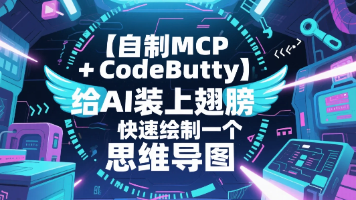Netty(1)之基础知识
一、BIO(Blocking IO)1、特点同步阻塞模型,一个线程只能处理一个请求2、缺点IO代码里read操作是阻塞操作,如果连接不做数据读写操作会导致线程阻塞,浪费资源如果线程很多,会导致服务器线程太多,压力太大3、应用场景BIO适用于请求数量较小且固定的架构二、NIO(Non Blocking IO)1、特点同步非阻塞,服务器实现模式为一个线程可以处理多个请求,客户端发送的连接请求都会注册到
一、BIO(Blocking IO)
1、特点
同步阻塞模型,一个线程只能处理一个请求
2、缺点
-
IO代码里read操作是阻塞操作,如果连接不做数据读写操作会导致线程阻塞,浪费资源
-
如果线程很多,会导致服务器线程太多,压力太大
3、应用场景
BIO适用于请求数量较小且固定的架构
二、NIO(Non Blocking IO)
1、特点
同步非阻塞,服务器实现模式为一个线程可以处理多个请求,客户端发送的连接请求都会注册到多路复用器epoll上,多路复用器轮询到有请求的就执行处理;I/O多路复用一般用Linux API(select、poll、epoll)来实现。区别:

2、三大组件
- Channel(通道)
- Buffer(缓冲区)
- Selector(选择器)
3、demo
一般使用在连接数多并且比较短的架构,比如聊天系统、弹幕系统、服务器间通讯
getSelector()
- 创建默认的管道连接,初始化端口,注册一个连接的监听事件
- 死循环读取选择器上面的事件
- 调用处理
public class NIOServer {
private static final Selector SELECTOR = getSelector();
public static void main(String[] args) throws IOException {
assert SELECTOR != null;
while (true){
//监听selector上面注册的事件
SELECTOR.select();
Iterator<SelectionKey> iterator = SELECTOR.selectedKeys().iterator();
while (iterator.hasNext()){
SelectionKey selectionKey = iterator.next();
//处理本次key,防止下次selector进行处理
handler(selectionKey);
iterator.remove();
}
}
}
public static Selector getSelector() {
try {
ServerSocketChannel serverSocketChannel = ServerSocketChannel.open();
serverSocketChannel.bind(new InetSocketAddress(9001));
serverSocketChannel.configureBlocking(false);
Selector selector = Selector.open();
serverSocketChannel.register(selector, SelectionKey.OP_ACCEPT);
return selector;
} catch (IOException e) {
e.printStackTrace();
}
return null;
}
}
handler()
- 如果是连接事件,配置好管道并且注册一个 读事件
- 如果是读事件,读取数据
private static void handler(SelectionKey selectionKey) throws IOException {
if(selectionKey.isAcceptable()){
System.out.println("检测到连接事件。。。");
ServerSocketChannel serverSocketChannel = (ServerSocketChannel) selectionKey.channel();
SocketChannel socketChannel = serverSocketChannel.accept();
socketChannel.configureBlocking(false);
socketChannel.register(SELECTOR,SelectionKey.OP_READ);
socketChannel.write(ByteBuffer.wrap("hello client".getBytes()));
}else if (selectionKey.isReadable()){
System.out.println("检测到读事件。。。");
SocketChannel socketChannel = (SocketChannel) selectionKey.channel();
ByteBuffer allocate = ByteBuffer.allocate(1024);
int read = socketChannel.read(allocate);
if(read != -1){
System.out.println("读取客户端数据:"+new String(allocate.array(),0,read));
}
socketChannel.write(ByteBuffer.wrap("服务端收到信息".getBytes()));
}else if(selectionKey.isWritable()){
System.out.println("检测到写事件");
SocketChannel socketChannel = (SocketChannel) selectionKey.channel();
ByteBuffer allocate = ByteBuffer.allocate(1024);
int read = socketChannel.read(allocate);
if(read != -1){
System.out.println("读取客户端写数据:"+new String(allocate.array(),0,read));
}
socketChannel.write(ByteBuffer.wrap("服务端收到信息等待客户端进行处理后返回数据。。".getBytes()));
}
}
三、AIO
异步非阻塞,对NIO进行封装
四、Netty

- mainReactor:只处理客户端的连接,处理了连接之后将管道注册到subReactor
- subReactor:处理完客户端的连接会将管道注册到当前reactor上,然后将读写等事件分发到线程池中进行处理
1、Netty模型

- Boss Group:相当于上面的mainReactor,只处理客户端请求,每一个线程中都维护一个selector
- 第一步监听到客户端的请求,生成NioSokectChannel
- 第二步注册NioSokectChannel到某一个Work Group中某一个线程中
- 第三步在执行任务runAllTasks
- Work Group:相当于上面的subReactor,建立管道来处理读写等事件,其中每一个线程中都维护一个selector
- 轮询处理NioSocketChannel中read、writer事件
- runAllTasks处理任务队列TaskQueue的任务
2、ByteBuf
3、TCP粘包/半包问题的解决
3.1 问题产生的原因
- 应用程序write写入的字节大小大于套接口发送缓冲区大小
- 进行MSS大小的TCP分段
- 以太网帧的payload大于MTU进行IP分片
3.2 主流解决方案
- 消息定长,例如每个报文的大小为固定200字节,如果不够,空位补空格
- 在包尾增加回车换行符进行分割,例如FTP协议
- 将消息分为消息头和消息体,消息头中包含表示消息总长度(或者消息体长度)的字段,通常设计思路为消息头的第一个字段使用int32来表示消息的总长度
- 更复杂的应用层协议
3.3 netty解码器
LineBasedFrameDecoder:依次遍历ByteBuf中可读字节,判断看是否有 \n 或者 \r\n,如果有,就以此为结束位置。如果读取到最大行仍然没有换行符,就会抛出异常
StringDecoder:将接收到的对象转换成字符串,然后继续调用后续的handler
时间服务器服务端:
public class NettyTimeServer {
public static void main(String[] args) {
int port = 8080;
new NettyTimeServer().bind(port);
}
public void bind(int port) {
NioEventLoopGroup bossGroup = new NioEventLoopGroup();
NioEventLoopGroup workGroup = new NioEventLoopGroup();
try {
ServerBootstrap serverBootstrap = new ServerBootstrap();
serverBootstrap
.group(bossGroup, workGroup)
.channel(NioServerSocketChannel.class)
.option(ChannelOption.SO_BACKLOG, 1024)
.childHandler(new ChildChannelHandler());
ChannelFuture channelFuture = serverBootstrap.bind(port).sync();
//等待服务端监听端口关闭
channelFuture.channel().closeFuture().sync();
} catch (InterruptedException e) {
e.printStackTrace();
} finally {
bossGroup.shutdownGracefully();
workGroup.shutdownGracefully();
}
}
private static class ChildChannelHandler extends ChannelInitializer<SocketChannel> {
@Override
protected void initChannel(SocketChannel socketChannel) throws Exception {
//处理粘包/半包,会去遍历数据当中是否有转义符,如果没有会抛出异常信息
socketChannel.pipeline().addLast(new LineBasedFrameDecoder(1024));
//将接收到的数据解码成字符串,后续可以直接获取string类型数据
socketChannel.pipeline().addLast(new StringDecoder());
socketChannel.pipeline().addLast(new TimeServerHandler());
}
}
private static class TimeServerHandler extends ChannelHandlerAdapter {
private int counter;
@Override
public void channelRead(ChannelHandlerContext ctx, Object msg) throws Exception {
String body = (String) msg;
System.out.println("The time server receive order : " + body + ", the counter is :" + ++counter);
String currentTime = "query time order".equalsIgnoreCase(body) ? new Date(System.currentTimeMillis()).toString() : "bad order";
currentTime = currentTime + System.getProperty("line.separator");
ByteBuf resp = Unpooled.copiedBuffer(currentTime.getBytes(StandardCharsets.UTF_8));
ctx.write(resp);
}
@Override
public void channelReadComplete(ChannelHandlerContext ctx) throws Exception {
ctx.flush();
}
@Override
public void exceptionCaught(ChannelHandlerContext ctx, Throwable cause) throws Exception {
cause.printStackTrace();
ctx.close();
}
}
}
时间客户端:
public class NettyTimeClient {
public static void main(String[] args) {
try {
new NettyTimeClient().connect("127.0.0.1", 8080);
} catch (InterruptedException e) {
e.printStackTrace();
}
}
public void connect(String host, int port) throws InterruptedException {
NioEventLoopGroup eventLoopGroup = new NioEventLoopGroup();
Bootstrap client = new Bootstrap();
client.group(eventLoopGroup)
.channel(NioSocketChannel.class)
.option(ChannelOption.TCP_NODELAY, true)
.handler(new ChannelInitializer<SocketChannel>() {
@Override
protected void initChannel(SocketChannel socketChannel) throws Exception {
socketChannel.pipeline().addLast(new LineBasedFrameDecoder(1024));
socketChannel.pipeline().addLast(new StringDecoder());
socketChannel.pipeline().addLast(new TimeClientHandler());
}
});
ChannelFuture future = client.connect(new InetSocketAddress(host, port)).sync();
future.channel().closeFuture().sync();
}
public static class TimeClientHandler extends ChannelHandlerAdapter {
private int counter;
@Override
public void channelActive(ChannelHandlerContext ctx) throws Exception {
byte[] req = ("query time order" + System.getProperty("line.separator")).getBytes(StandardCharsets.UTF_8);
for (int i = 0; i < 100; i++) {
ByteBuf buffer = Unpooled.buffer(req.length);
buffer.writeBytes(req);
ctx.writeAndFlush(buffer);
}
}
@Override
public void channelRead(ChannelHandlerContext ctx, Object msg) throws Exception {
/*ByteBuf byteBuf = (ByteBuf) msg;
byte[] bytes = new byte[byteBuf.readableBytes()];
byteBuf.readBytes(bytes);
String body = new String(bytes, StandardCharsets.UTF_8);*/
String body = (String) msg;
System.out.println("Now is: " + body + "; the counter is :" + ++counter);
}
@Override
public void exceptionCaught(ChannelHandlerContext ctx, Throwable cause) throws Exception {
ctx.close();
}
}
}
DelimiterBasedFrameDecoder:指定分隔符切分
FixedLengthFrameDecoder:固定长度进行切分
分隔符解码器在超过限制的大小还没有读取到分隔符,会抛出异常,主要目的是防止内存溢出
ByteBuf delimiter = Unpooled.copiedBuffer("@".getBytes(StandardCharsets.UTF_8));
//1024代表单条消息最大长度,当到达该长度的后还没有找到分隔符,就抛出TooLongFrameException异常, 使用指定分隔符进行拆分数据包
DelimiterBasedFrameDecoder delimiterBasedFrameDecoder = new DelimiterBasedFrameDecoder(1024, delimiter);
socketChannel.pipeline().addLast(delimiterBasedFrameDecoder);
//定长解码器,按照指定长度进行解码,如果不足长度会等待下一次的数据包,然后进行拼包
socketChannel.pipeline().addLast(new FixedLengthFrameDecoder(20));
4、编解码技术
java提供的 ObjectInputStream 和 ObjectOutputStream 可以直接把java对象作为可存储的字节数组写入文件以及网络传输。
java序列化的目的主要有两个
- 网络传输:需要把传输的java对象编码为字节数组或者Bytebuffer对象,远程服务读取到Bytebuffer或者字节数组后转换为java对象
- 对象持久化
4.1 java序列化的缺点
- 无法跨语言:如果使用异构语言进程进行交互,Java序列化就不能胜任
- 序列化后的码流太大
- 序列化性能太低
4.2 业界主流的编解码框架
1. Protobuf
谷歌开源框架,数据结构以.proto文件进行描述
特点:
- 结构化数据存储结构(XML、JSON等)
- 高效的编解码性能
- 语言无关、平台无关、扩展性好
- 官方支持Java、C++和Python
2. Thrift
Facebook开源而来
支持三种典型的编解码方式
- 通用的二进制编解码
- 压缩二进制编解码
- 优化的可选字段压缩编解码
3. JBoss Marshalliing
java对象的序列化API包,修正了JDK自带的序列化包的很多问题
优点:
- 可插拔的类解析器,更加便捷的类加载定制策略,通过一个接口即可实现
- 可插拔的对象替换技术,不需要通过继承的方式
- 可插拔的预定义类缓存表,可以减小序列化的字节数组的长度,提升常用类型的对象序列化性能
- 无须实现java.io.Serializable接口,即可实现Java序列化
- 通过缓存技术提升对象的序列化性能
4.3 netty实现对象编解码
Netty提供的 ObjectEncoder 和 ObjectDecoder 处理器进行编解码
//在socket管道中新增编解码器,可以自动对数据进行序列化和反序列化
//创建 WeakReferenceMap对类加载器进行缓存,支持多线程并发访问,当虚拟机内存不足时,会释放缓存中的内存,防止内存泄漏
socketChannel.pipeline().addLast(
new ObjectDecoder(1024 * 1024, ClassResolvers.weakCachingConcurrentResolver(this.getClass().getClassLoader())));
socketChannel.pipeline().addLast(new ObjectEncoder());
socketChannel.pipeline().addLast(new SubReqServerHandler());
使用 Protobuf 提供的序列化进行处理
socketChannel.pipeline().addLast(new ProtobufVarint32FrameDecoder()); //处理半包
socketChannel.pipeline().addLast(new ProtobufDecoder(解码目标类.class)); //并没有半包的处理罗辑
socketChannel.pipeline().addLast(new ProtobufVarint32LengthFieldPrepender());
socketChannel.pipeline().addLast(new ProtobufEncoder());
socketChannel.pipeline().addLast(new SubReqServerHandler());
更多推荐
 已为社区贡献2条内容
已为社区贡献2条内容








所有评论(0)